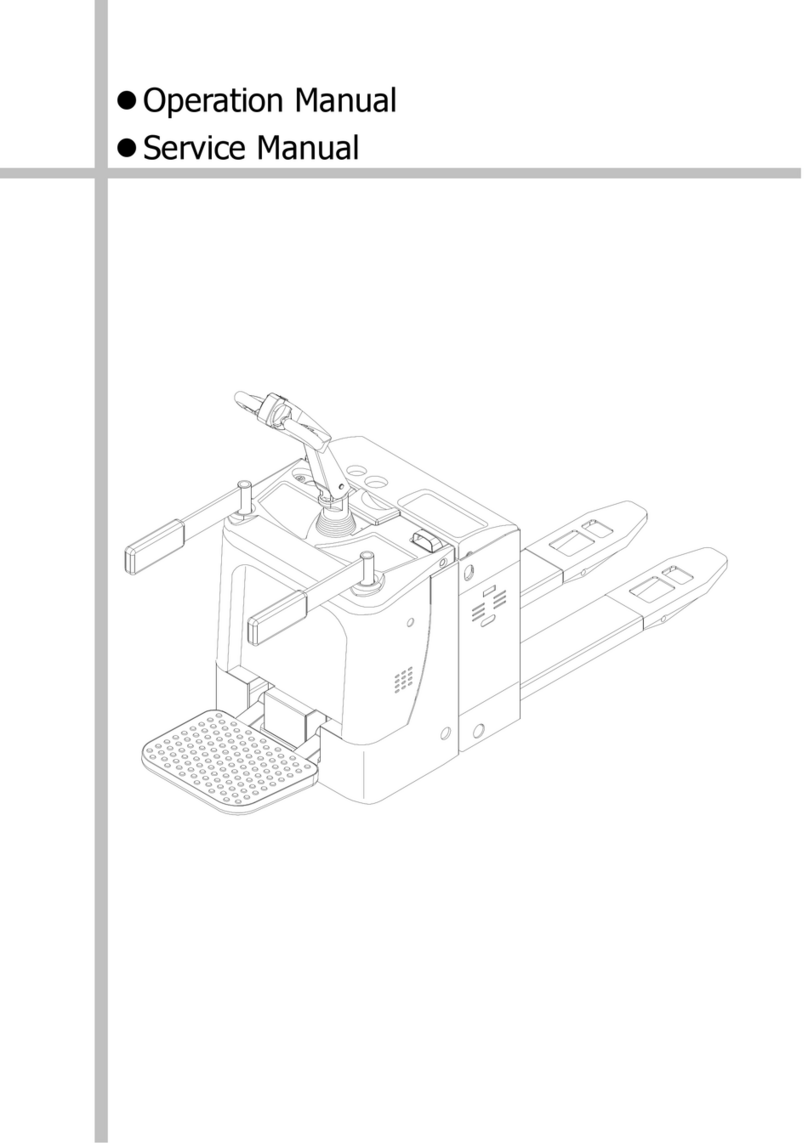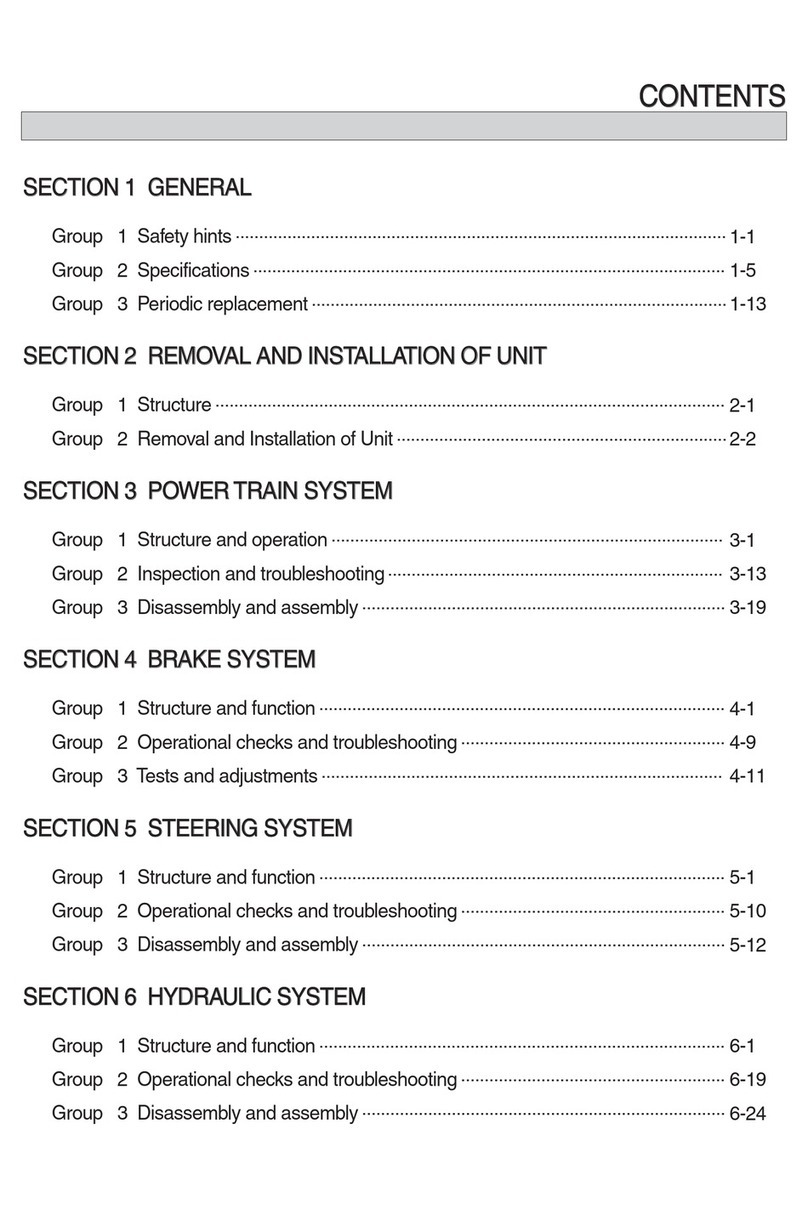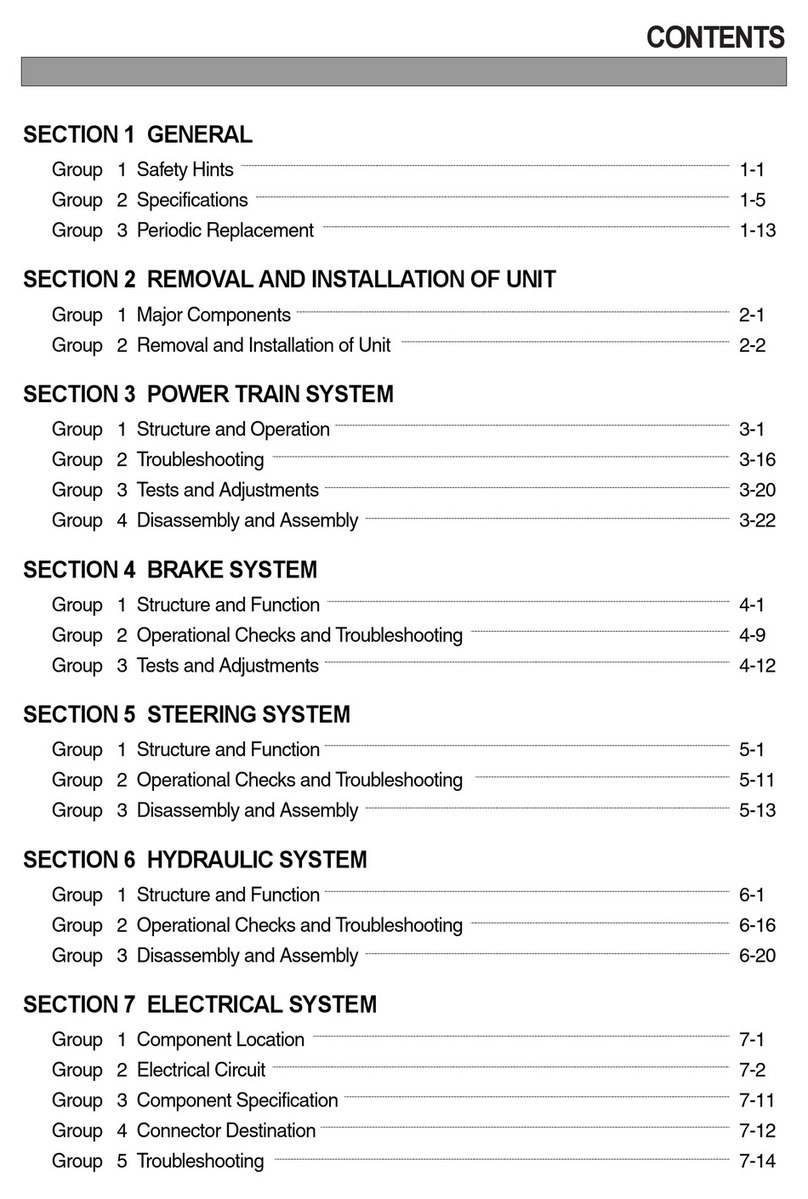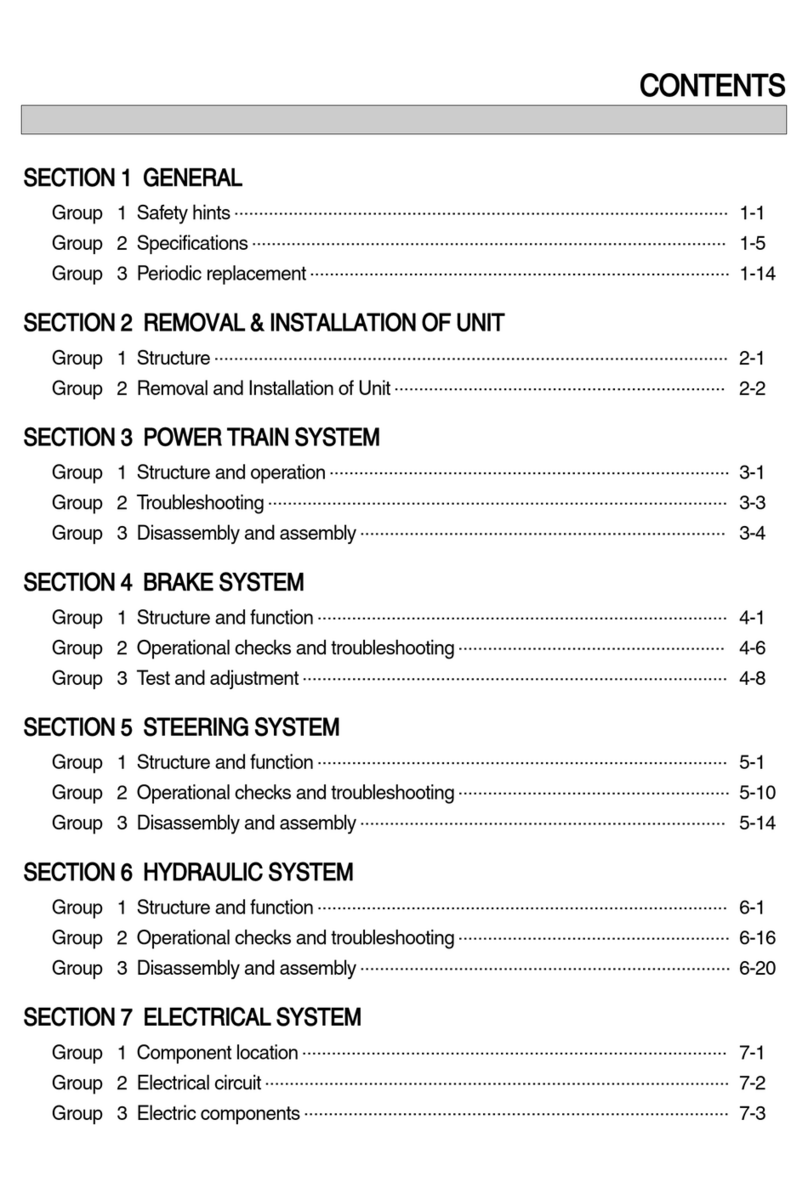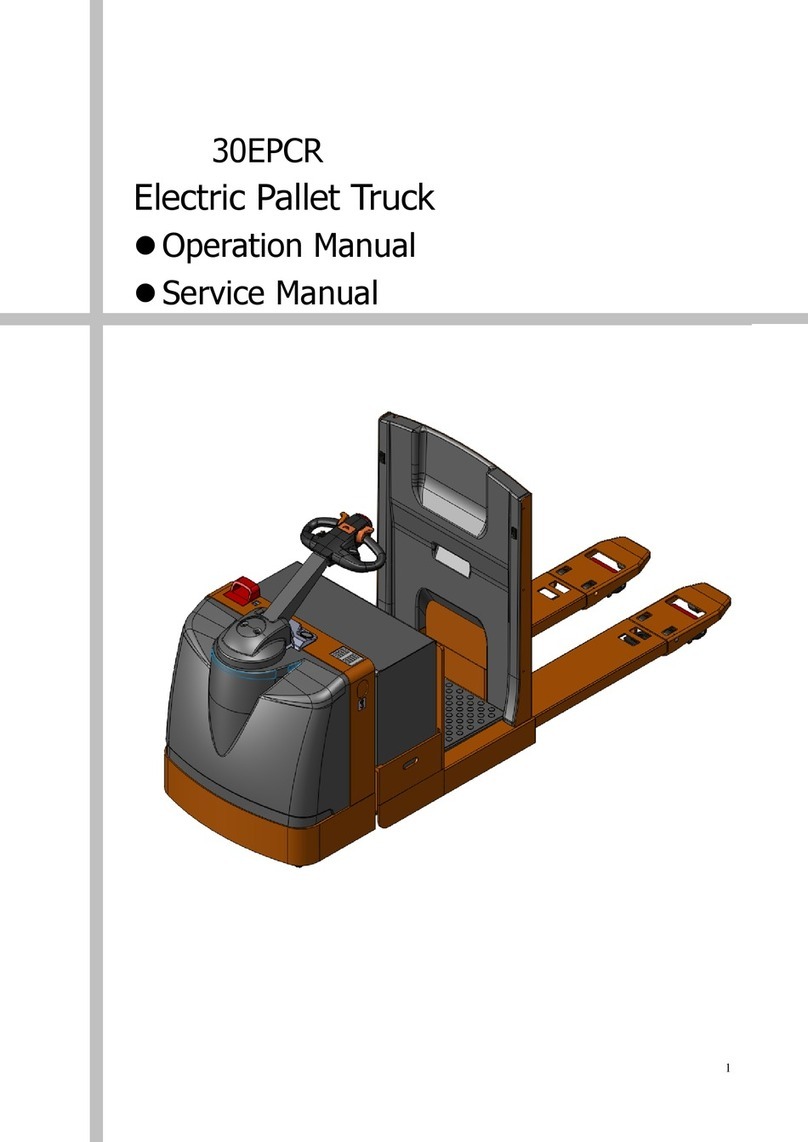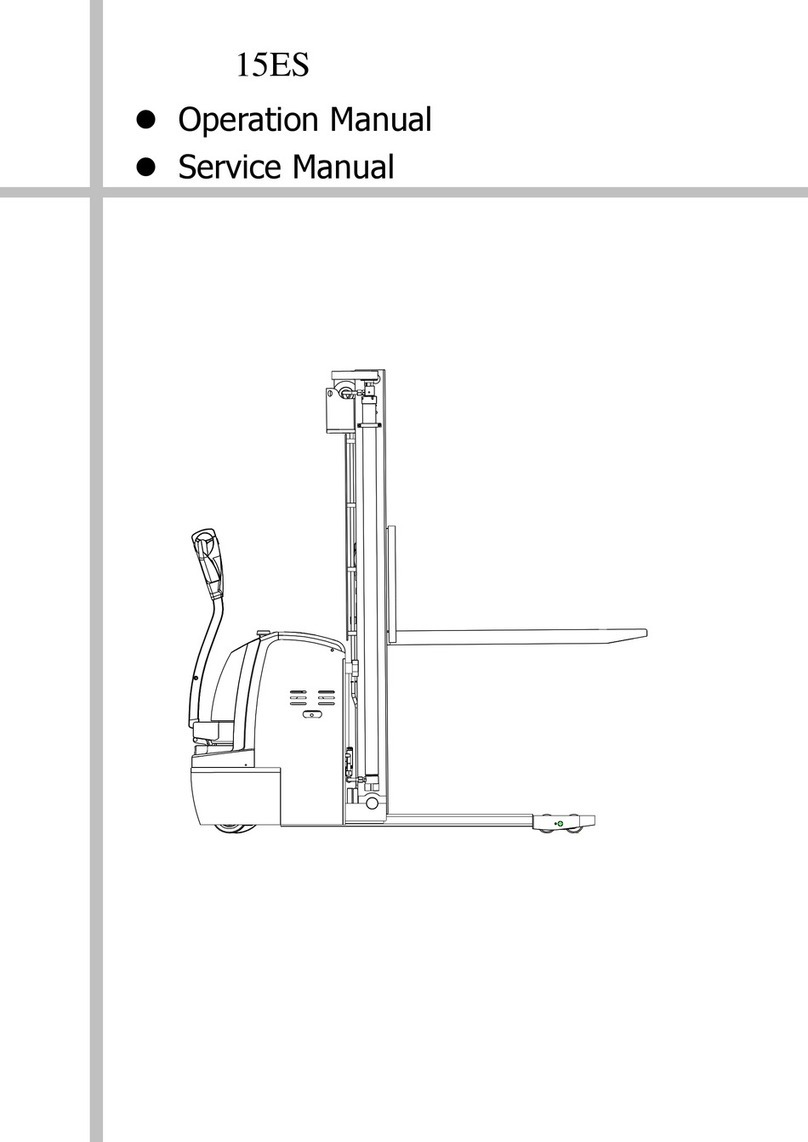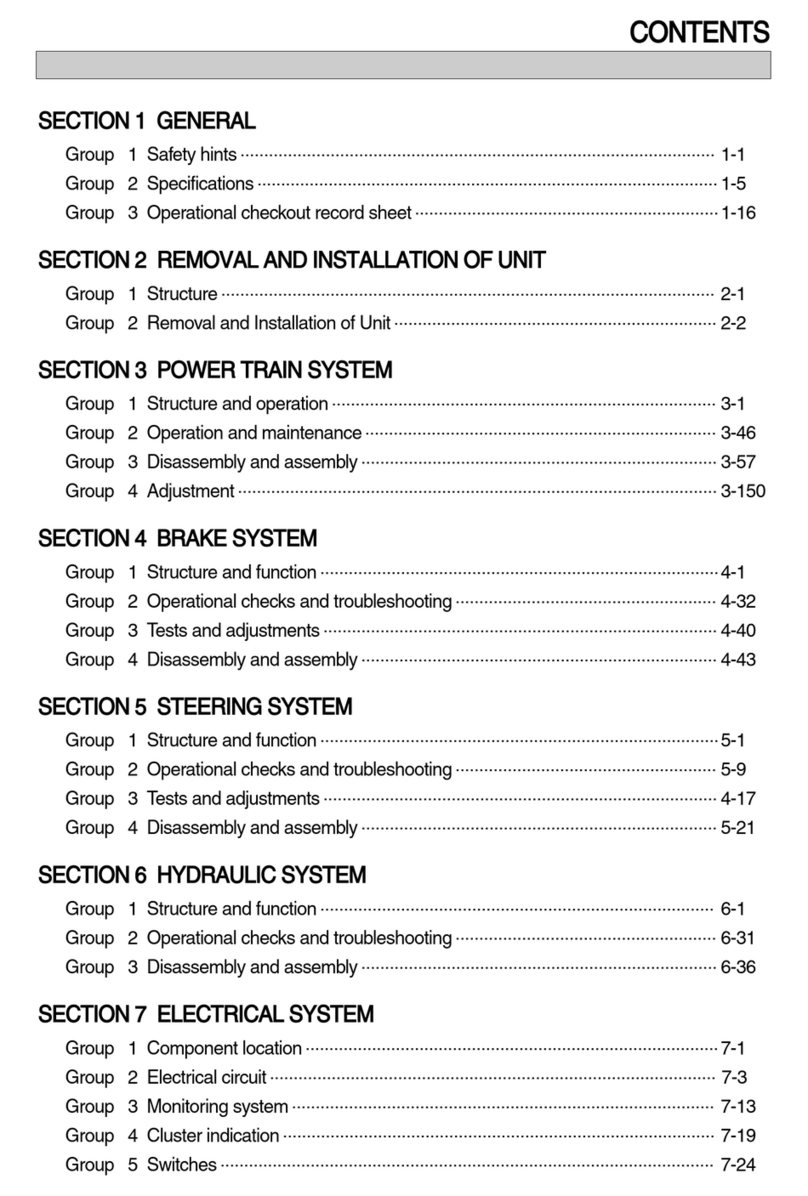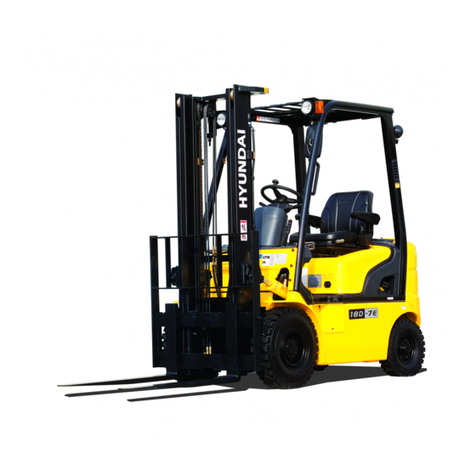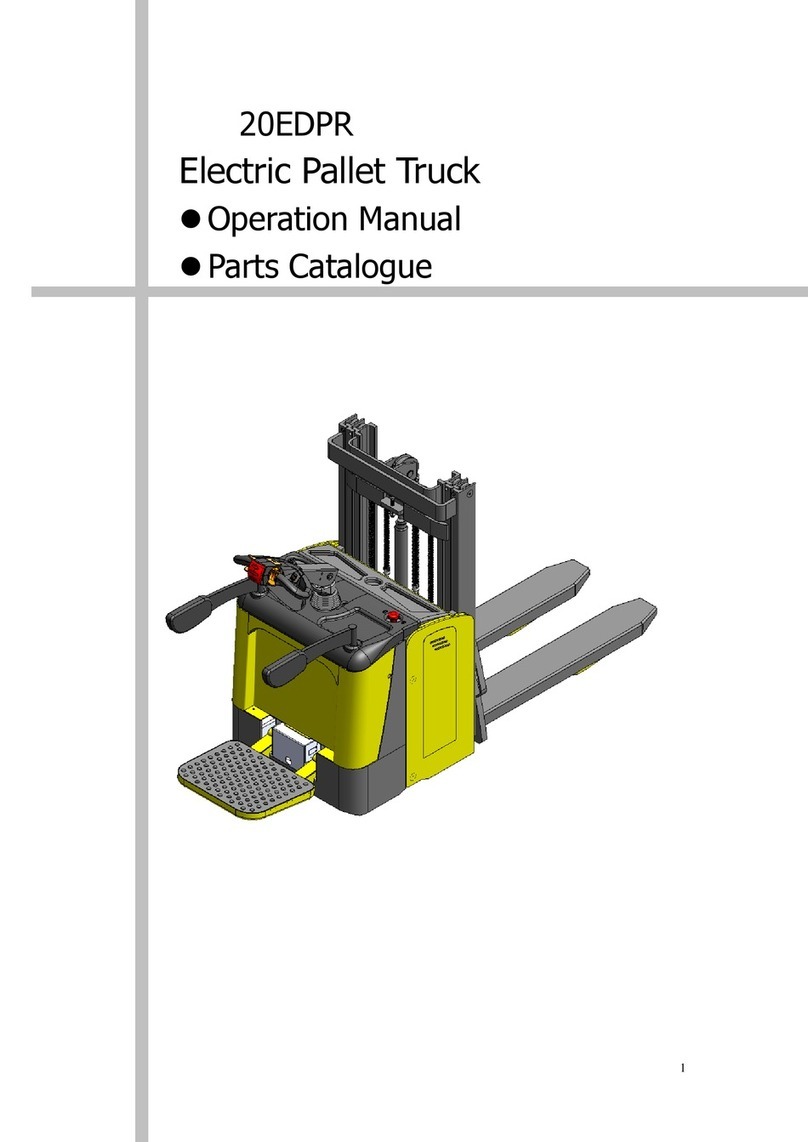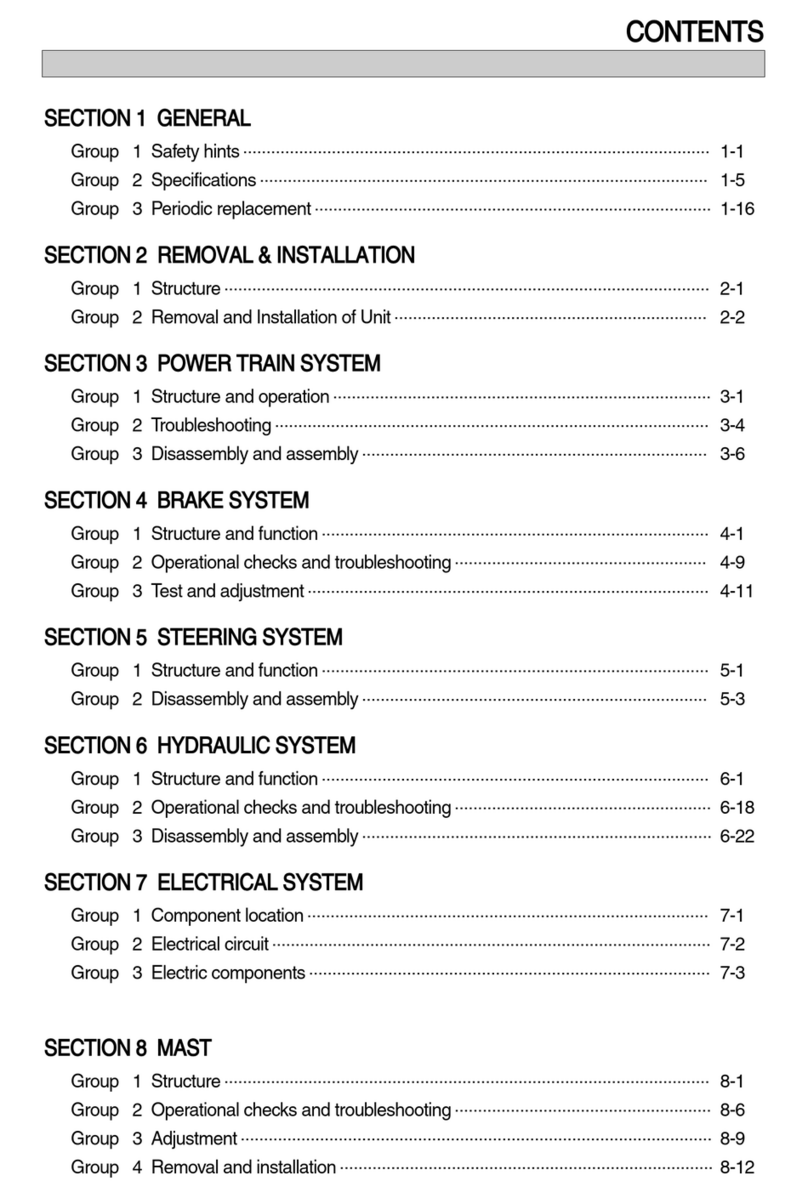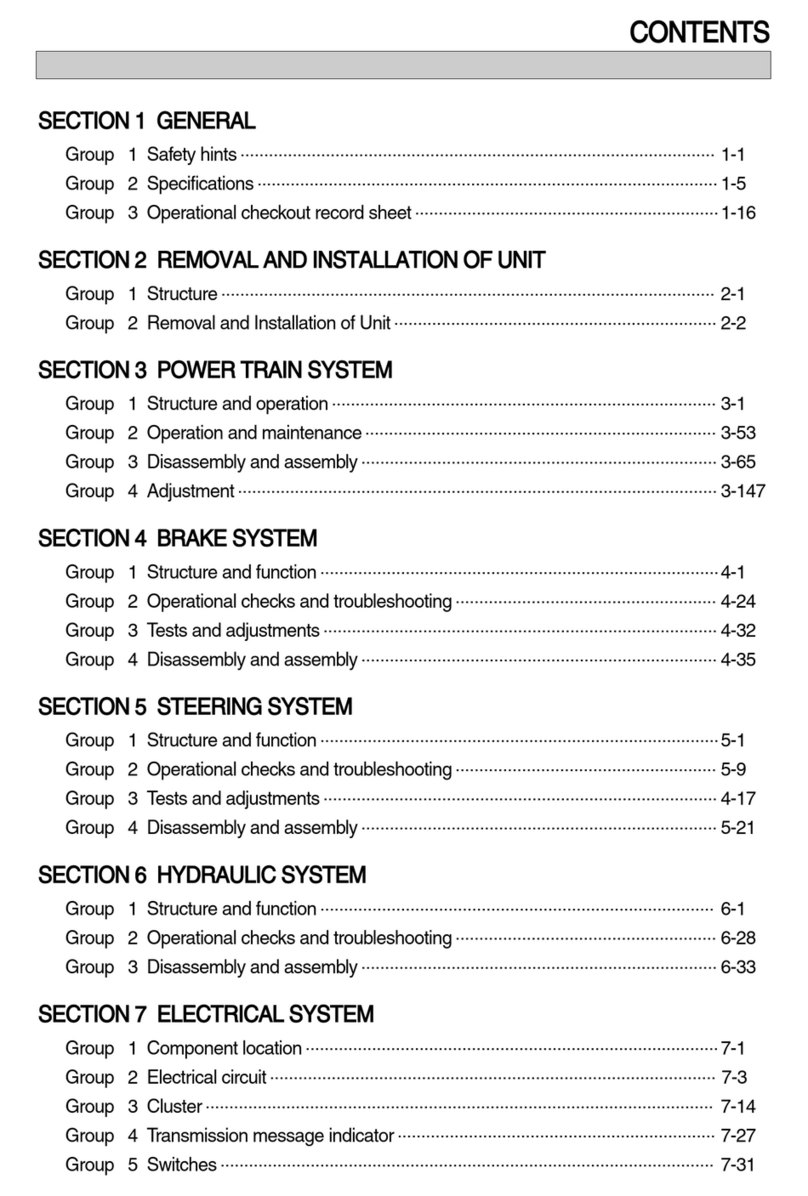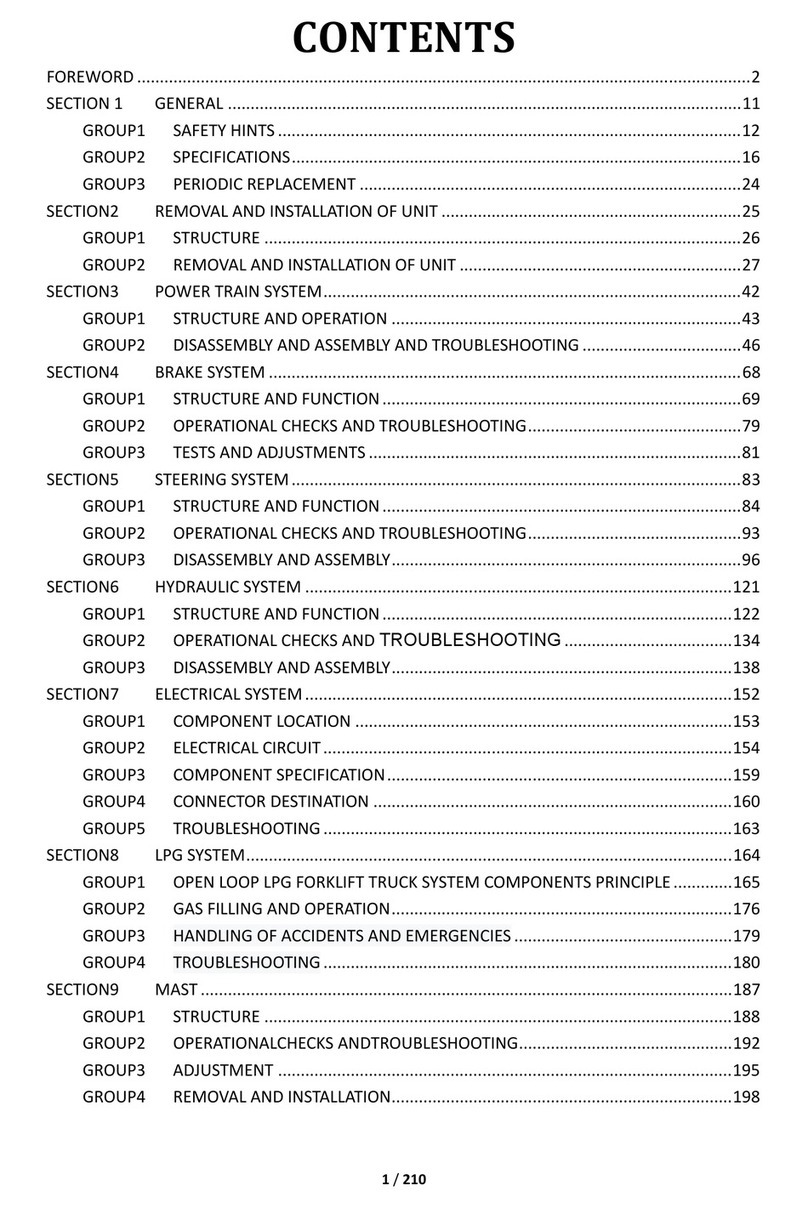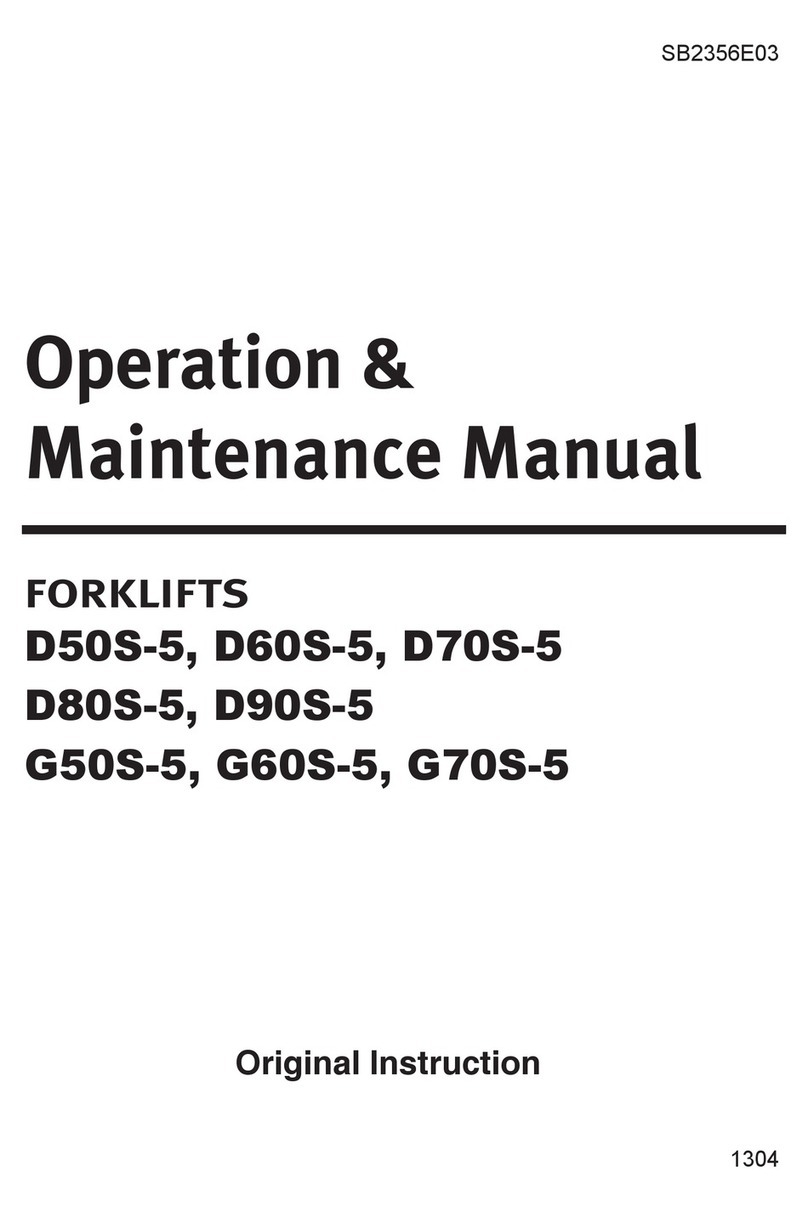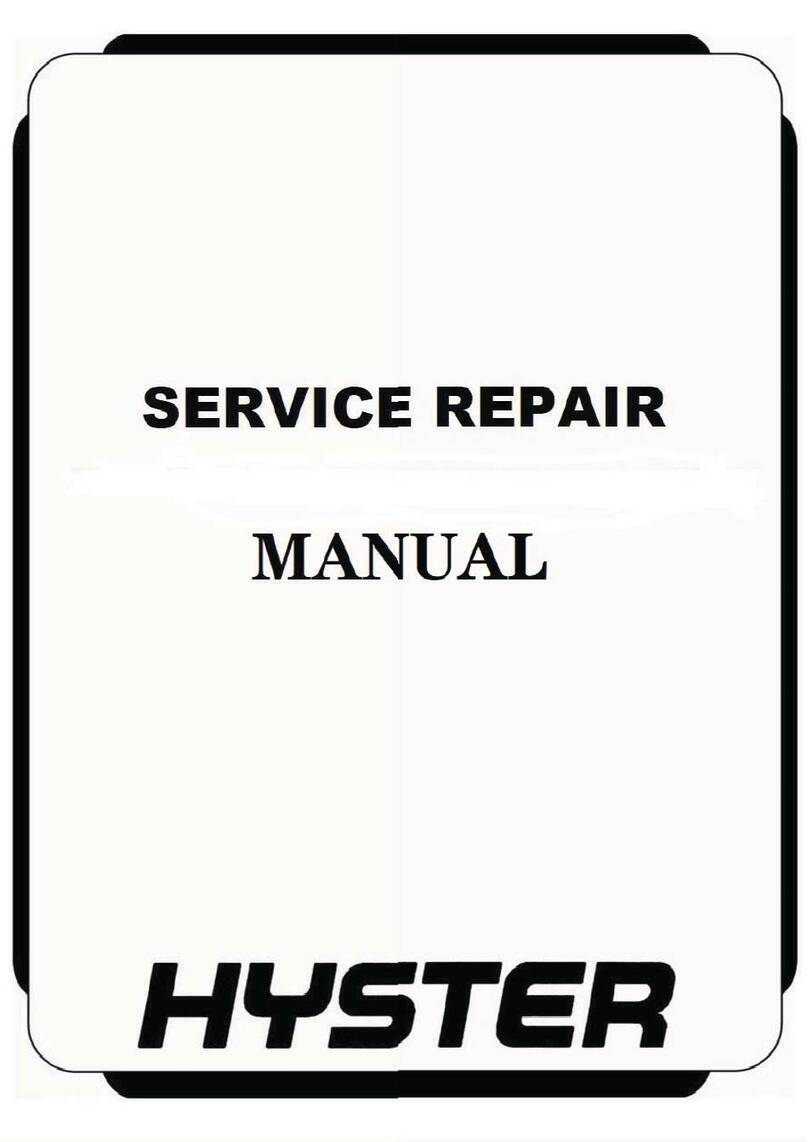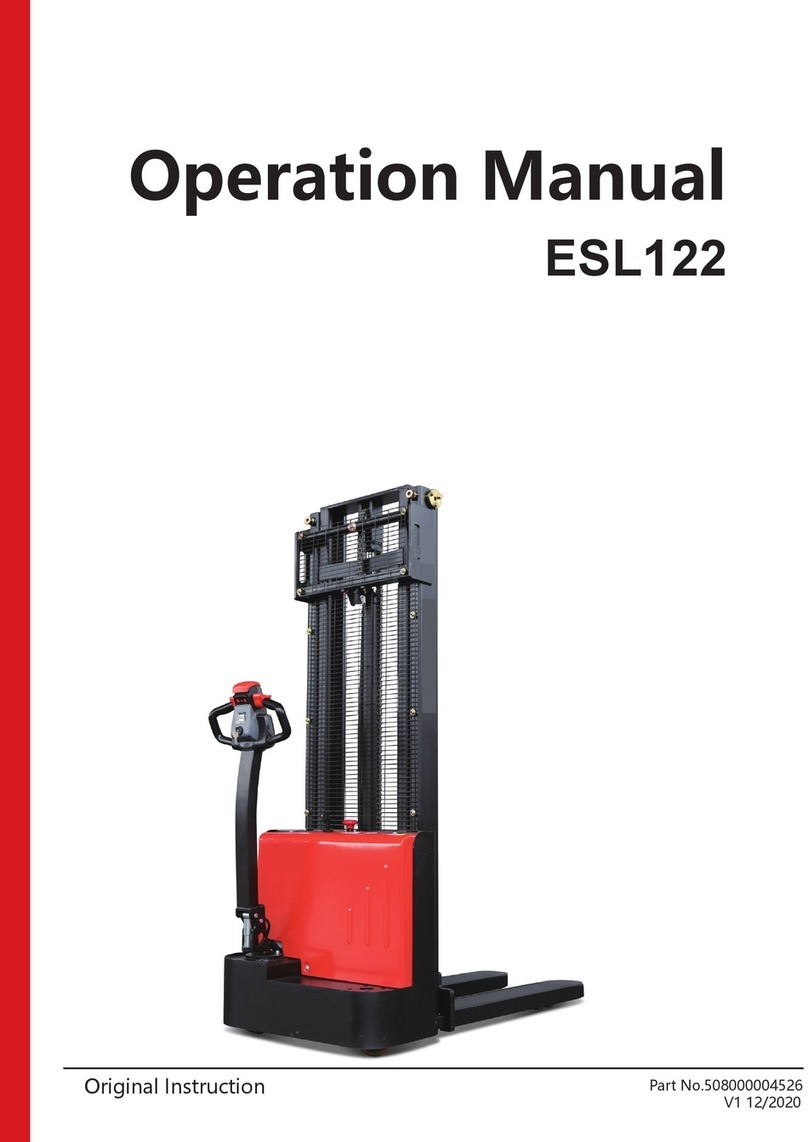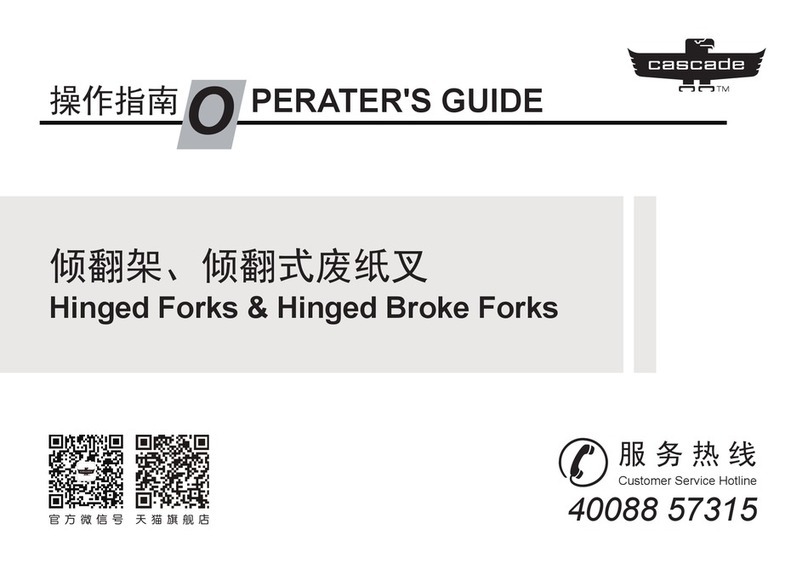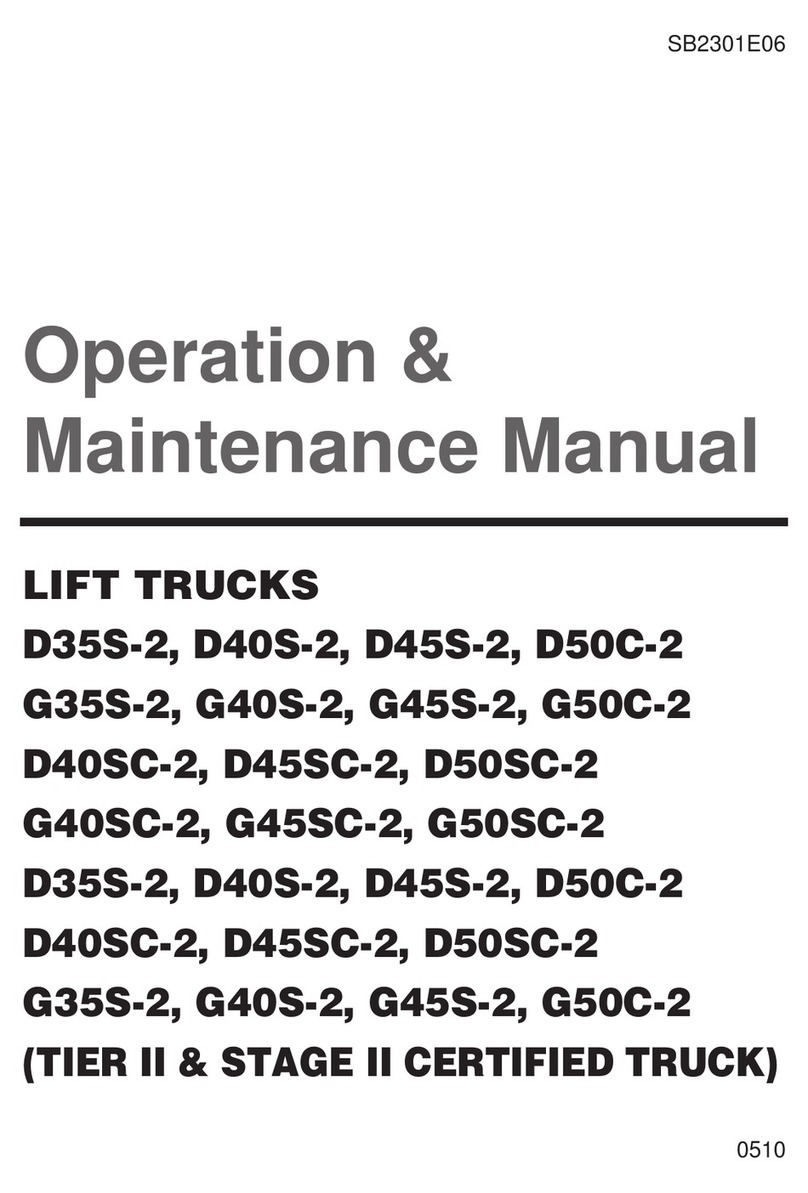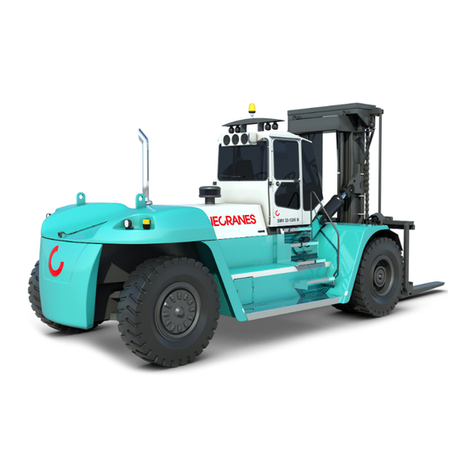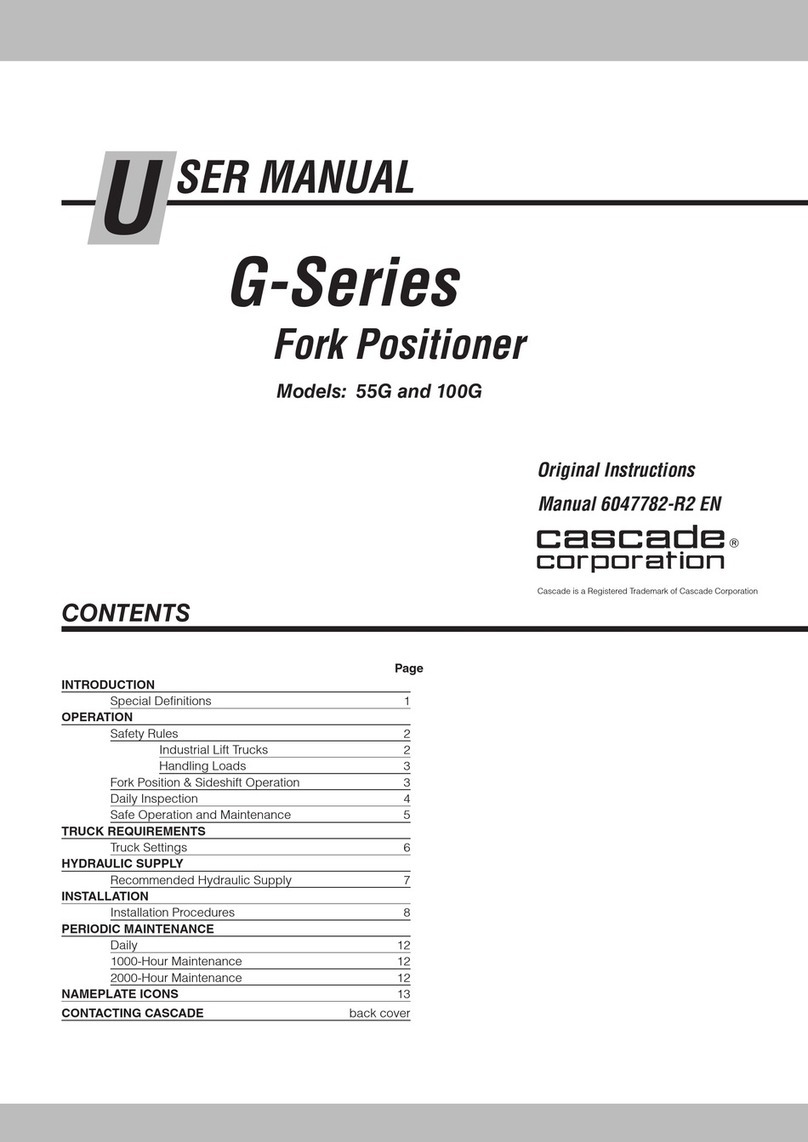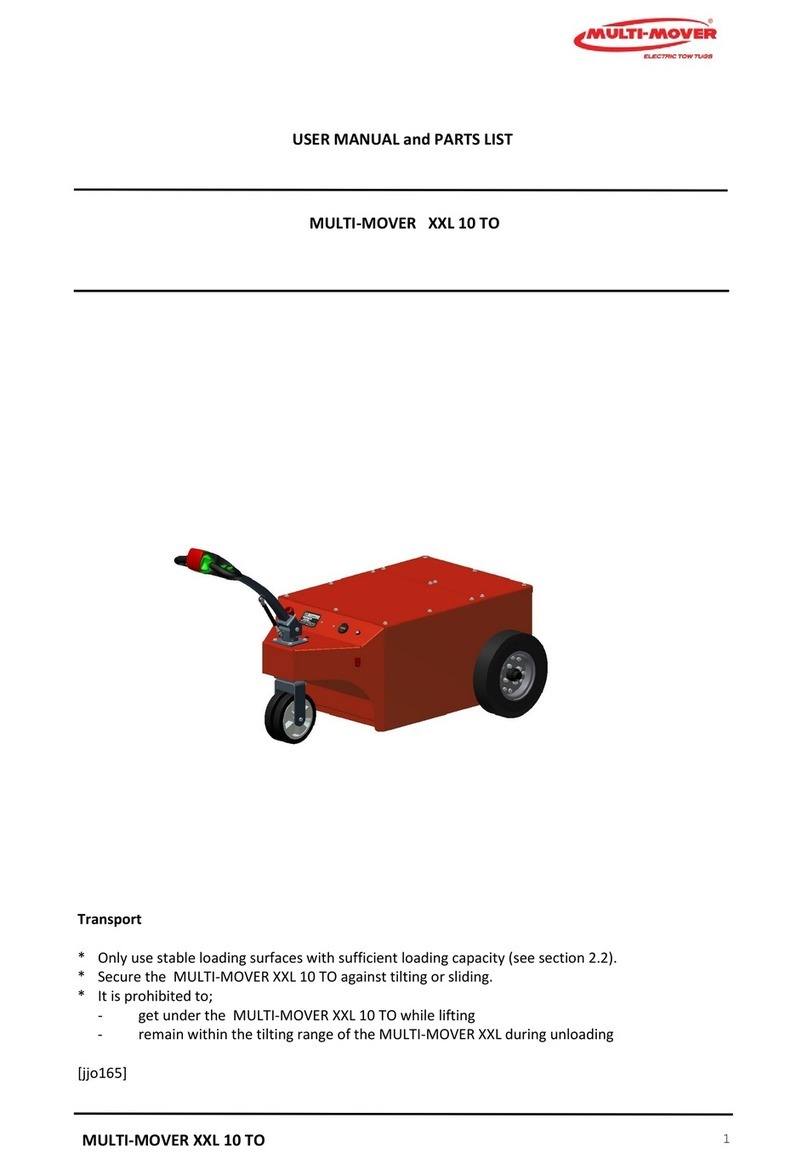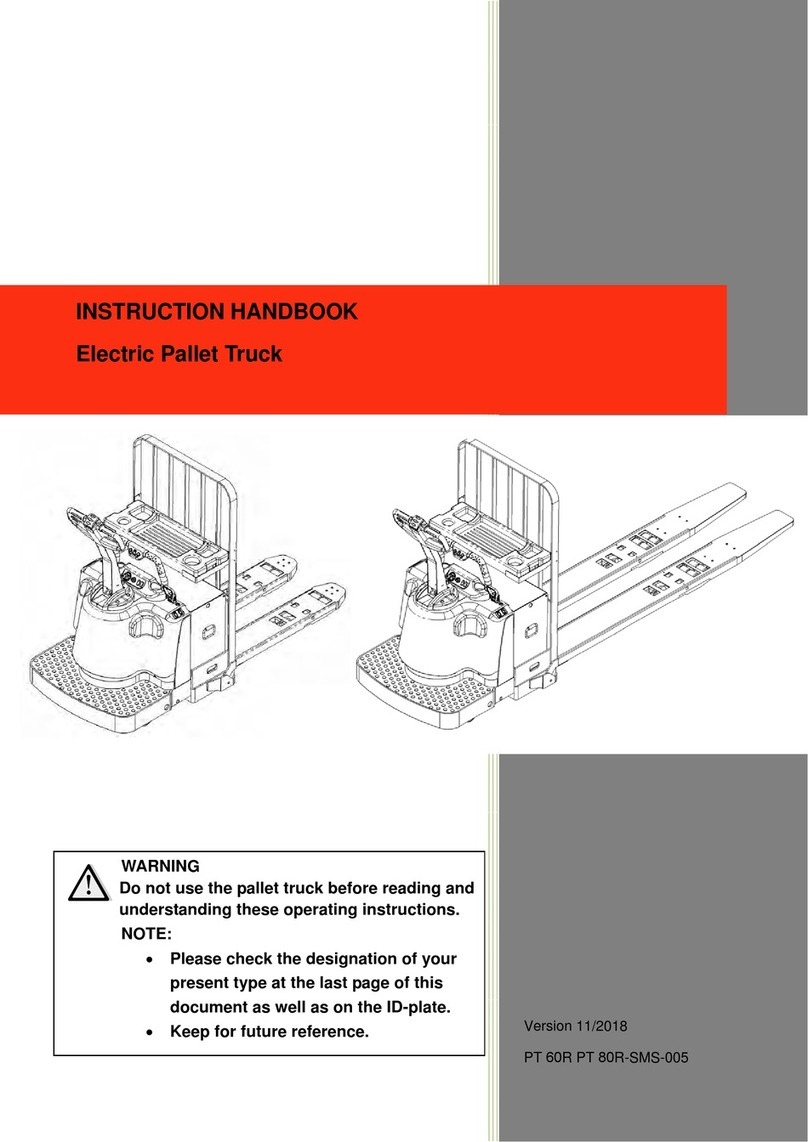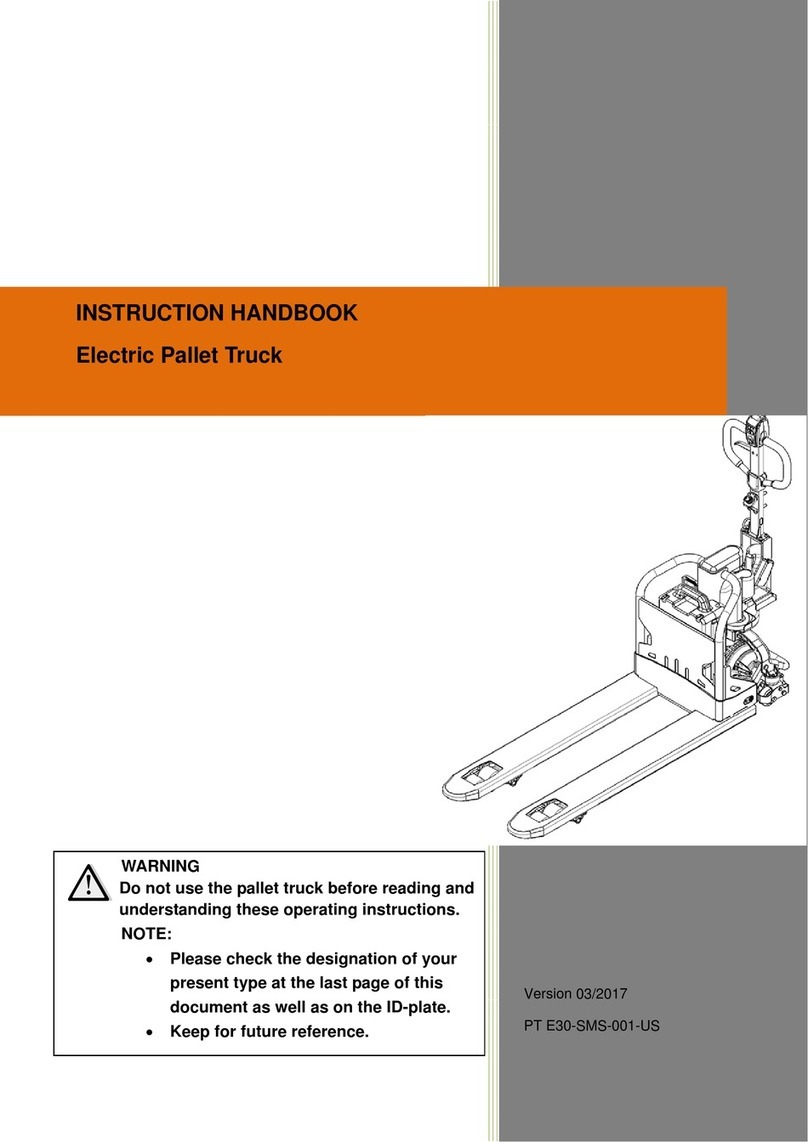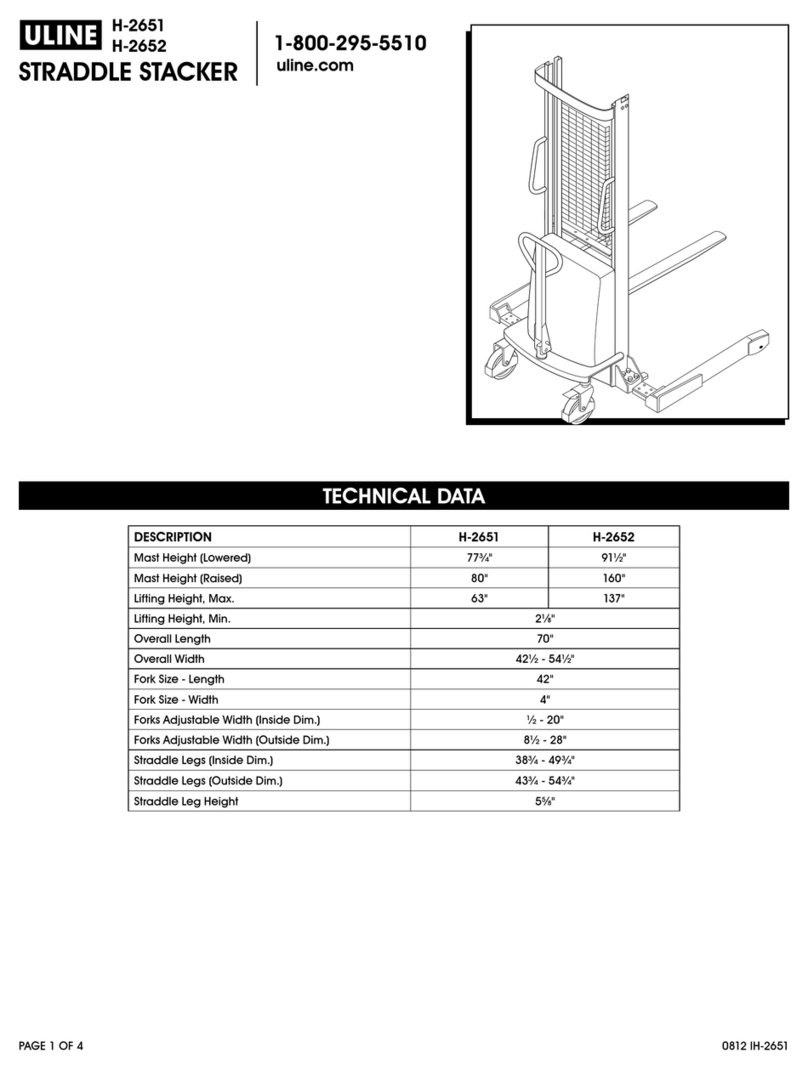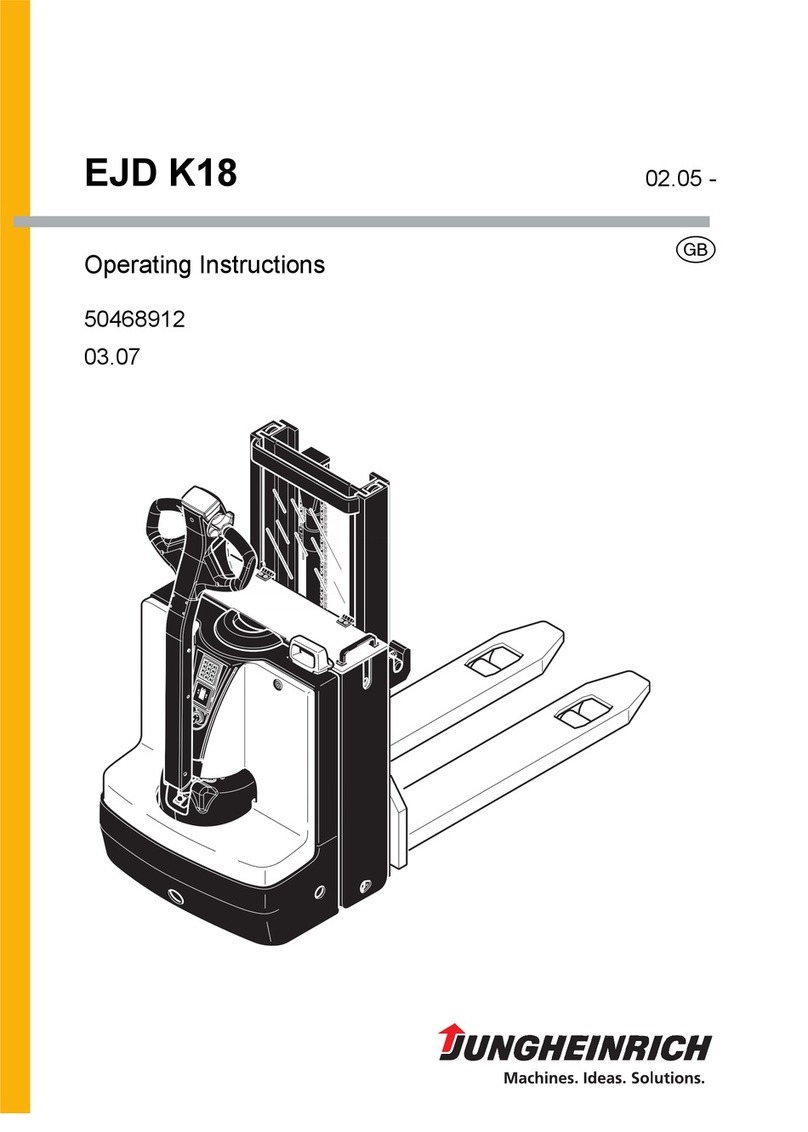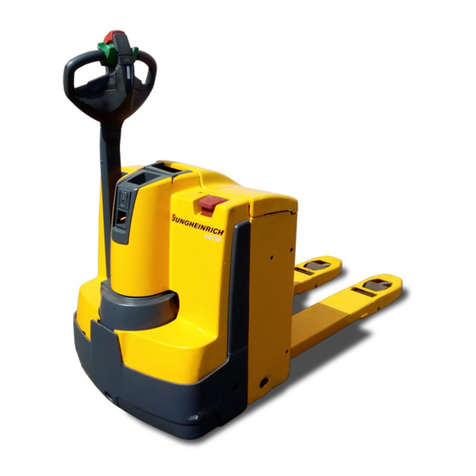
0-3
This manual is a digest of essential information about the safe operation, the features and functions
and explains how to maintain your lift truck. This manual is organized into ten major parts:
Section 1. Safety hints, reviews and illustrates accepted practices for safe operation of a lift truck.
Section 2. Operating Hazards
Section 2. Operating Hazards, warns of conditions that could cause damage to the truck or injury to
the operator or other personnel.
Section 3. Know Your Truck
Section 3. Know Your Truck, describes the major operating components, systems, controls, and other
features of your truck and tells how they function.
Section 4. Operator Maintenance and Care
Section 4. Operator Maintenance and Care, presents details on how to perform the operator's daily
safety inspection and refuel the lift truck.
Section 5. Starting and Operating Procedures
Section 5. Starting and Operating Procedures, discusses specific instructions on the safe, efficient
operation of your lift truck.
Section 6. Emergency Starting and Towing
Section 6. Emergency Starting and Towing, gives instructions for towing your truck in an emergency
and for using battery jumper cables to start your truck in an emergency.
Section 7. Planned Maintenance and Lubrication
Section 7. Planned Maintenance and Lubrication, describes the PM (Planed Maintenance) program.
Section 8. Specifications
Section 8. Specifications, provides reference information and data on features, components, and
maintenance items.
Section 9. Troubleshooting
Section 9. Troubleshooting, provides trouble symptoms, causes and methods of remedy.
Section10. Testing and Adjusting
Section10. Testing and Adjusting, gives instructions for testing and adjusting.
※
The descriptions and specifications included in this manual were in effect at the time of printing.
The descriptions and specifications included in this manual were in effect at the time of printing.
HYUNDAI reserves the right to make improvements and changes in specifications or design, without
notice and without incurring obligation. Please check with your authorized HYUNDAI dealer for
information on possible updates or revisions.
The examples, illustrations, and explanations in this manual should help you improve your skill and
knowledge as a professional lift truck operator and take full advantage of the capabilities and safety
features of your new lift truck.
The first section of the manual is devoted to a review, with illustrations and brief messages, of general
safety rules and the major operating hazards you can encounter while operating a lift truck. Next, you
will find description's of the components of your specific lift truck model and how the instruments,
gauges, and controls operate. Then, you will find a discussion of safe and efficient operating
procedures, followed by instruction's on how to tow a disabled lift truck. The later sections of the
manual are devoted to maintenance and truck specifications.
Take time to carefully read the
Know Your Truck section. By acquiring a good basic understanding of
your truck's features, and how they function, you are better prepared to operate it both efficiently and
safely.
In
Planned Maintenance, you will find essential information for correct servicing and periodic
maintenance of your truck, including charts with recommended maintenance intervals and component
capacities. Carefully follow these instructions and procedures.
Each major section has its own table of contents, so that you can find the various topics more easily.
HOW TO USE THIS MANUAL
